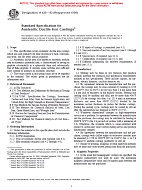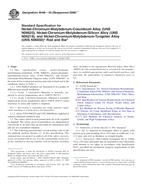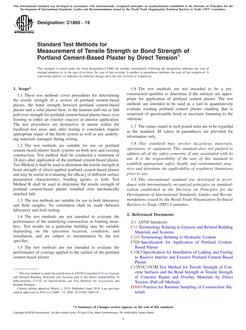1.1 Purpose:
1.1.1 The purpose of this test method, as a part of a suite of radio communication test methods, is to quantitatively evaluate a teleoperated robot's (see Terminology E2521) capability to perform maneuvering and inspection tasks in a line-of-sight environment.
1.1.2 Robots shall possess a certain set of radio communication capabilities, including performing maneuvering and inspection tasks in a line-of-sight environment, to suit critical operations for emergency responses. The capability for a robot to perform these types of tasks in unobstructed areas down range is critical for emergency response operations. This test method specifies a standard set of apparatuses, procedures, and metrics to evaluate the robot/operator capabilities for performing these tasks.
1.1.3 Emergency response robots shall be able to operate remotely using the equipped radios in line-of-sight (LOS) environments, in non-line-of-sight (NLOS) environments, and for signal penetration through such impediments as buildings, rubbles, and tunnels. Additional capabilities include operating in the presence of electromagnetic interference and providing link security and data logging. Standard test methods are required to evaluate whether candidate robots meet these requirements.
1.1.4 ASTM E54.08.01 Task Group on Robotics specifies a radio communication test suite, which consists of a set of test methods for evaluating these communication capabilities. This line-of-sight range test method is a part of the radio communication test suite. The apparatuses associated with the test methods challenge specific robot capabilities in repeatable ways to facilitate comparison of different robot models as well as particular configurations of similar robot models.
1.1.5 This test method establishes procedures, apparatuses, and metrics for specifying and testing the capability of radio (wireless) links used between the operator station and the testing robot in a line-of-sight environment. These links include the command and control channel(s) and video, audio, and other sensor data telemetry.
1.1.6 This test method is intended to apply to ground based robotic systems and small unmanned aerial systems (sUAS) capable of hovering to perform maneuvering and inspection tasks down range for emergency response applications.
1.1.7 This test method specifies an apparatus that is an essentially clear radio frequency channel for testing. Fig. 1 provides an illustration.
Note 1 – Frequency coordination and interoperability are not addressed in this standard. These issues should be resolved by the affected agencies (Fire, Police, and Urban Search and Rescue) and written into the Standard Operating Procedures (SOPs) that guide the responses to emergency situations.
1.1.8 The radio communication test suite quantifies elemental radio communication capabilities necessary for robots intended for emergency response applications. As such, based on their particular capability requirements, users of this test suite can select only the applicable test methods and can individually weight particular test methods or particular metrics within a test method. The testing results should collectively represent a ground robot's overall radio communication capability. These test results can be used to guide procurement specifications and acceptance testing for robots intended for emergency response applications.
Note 2 – As robotic systems are more widely applied, emergency responders might identify additional or advanced robotic radio communication capability requirements to help them respond to emergency situations. They might also desire to use robots with higher levels of autonomy, beyond teleoperation to help reduce their workload-see NIST Special Publication 1011-II-1.0. Further, emergency responders in expanded emergency response domains might also desire to apply robotic technologies to their situations, a source for new sets of requirements. As a result, additional standards within the suite would be developed. This standard is, nevertheless, standalone and complete.
1.2 Performing Location – This test method shall be performed in a testing laboratory or the field where the specified apparatus and environmental conditions are implemented.
1.3 Units – The values stated in SI units shall be the standard. The values given in parentheses are not precise mathematical conversions to inch-pound units. They are close approximate equivalents for the purpose of specifying material dimensions or quantities that are readily available to avoid excessive fabrication costs of test apparatuses while maintaining repeatability and reproducibility of the test method results. These values given in parentheses facilitate testing but are not considered standard.
1.4 This standard does not purport to address all of the safety concerns, if any, associated with its use. It is the responsibility of the user of this standard to establish appropriate safety and health practices and determine the applicability of regulatory limitations prior to use.

Left: The line-of-sight range test method uses an airstrip or paved road with robot test stations placed every 100 m (330 ft) along the centerline. Right: Robot test stations are prototyped with targets on the barrels for visual inspection tasks and circular paths for maneuvering tasks.
FIG. 1 Test Fabrication at An Air Strip
Product Details
- Published:
- 02/01/2012
- Number of Pages:
- 11
- File Size:
- 1 file , 450 KB


